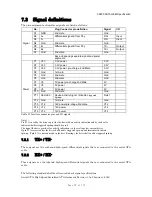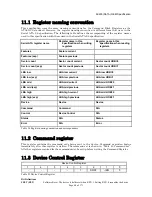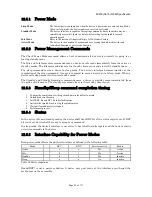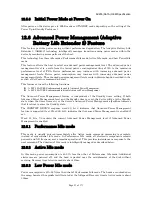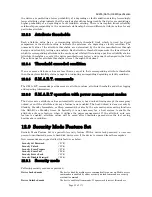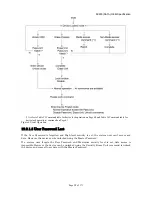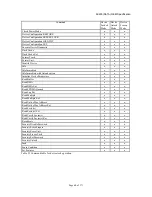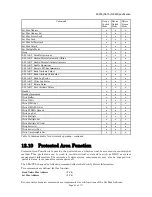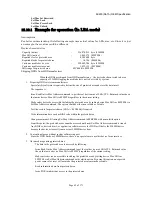
5K250 (SATA) OEM Specification
Page 50 of 171
12.3
Power-off considerations
12.3.1
Load/Unload
Load/Unload is a functional mechanism of the HDD. It is controlled by the drive microcode.
Specifically, unloading of the heads is invoked by the commands:
Command Response
Standby UL
->
Comp.
Standby immediate
UL -> Comp.
Sleep UL
->
Comp.
“UL” means “unload”.
“Comp” means “complete”.
Table 33 Device’s behavior by ATA commands
Load/unload is also invoked as one of the idle modes of the drive.
The specified start/stop life of the product assumes that load/unload is operated normally, NOT in
emergency mode.
12.3.2
Emergency unload
When HDD power is interrupted while the heads are still loaded, the microcode cannot operate and
the normal 5V power is unavailable to unload the heads. In this case, normal unload is not possible,
so the heads are unloaded by routing the back-EMF of the spinning motor to the voice coil. The
actuator velocity is greater than the normal case, and the unload process is inherently less
controllable without a normal seek current profile.
Emergency unload is intended to be invoked in rare situations. Because this operation is inherently
uncontrolled, it is more mechanically stressful than a normal unload.
A single emergency unload operation is more stressful than 100 normal unloads. Use of emergency
unload reduces the start/stop life of the HDD at a rate at least 100X faster than that of normal
unload, and may damage the HDD.
12.3.3
Required power-off sequence
Problems can occur on most HDDs when power is removed at an arbitrary time. Examples:
Data loss from the write buffer.
If the drive is writing a sector, a partially-written sector with an incorrect ECC block results. The sector
contents are destroyed and reading that sector results in a hard error.
Heads possibly land in the data zone instead of landing zone, depending on the design of the HDD.
You may then turn off the HDD in the following order:
1.
Issue Standby Immediate or sleep command.
2.
Wait until COMMAND COMPLETE STATUS is returned. (It may take up to 350 ms in typical case)
3.
Terminate power to HDD.
This power-down sequence should be followed for entry into any system power-down state, or system
suspend state, or system hibernation state. In a robustly designed system, emergency unload is
limited to rare scenarios such as battery removal during operation.




